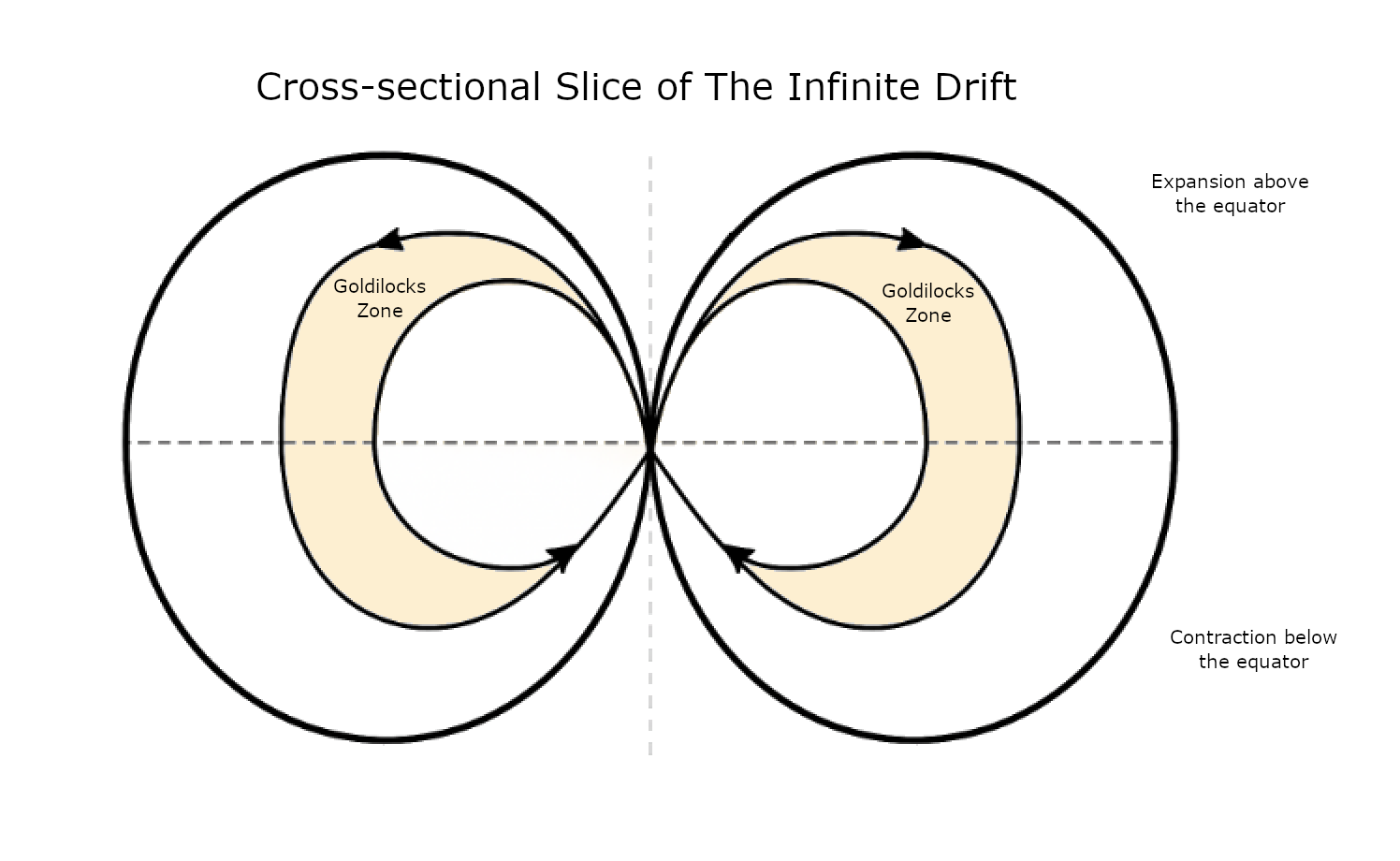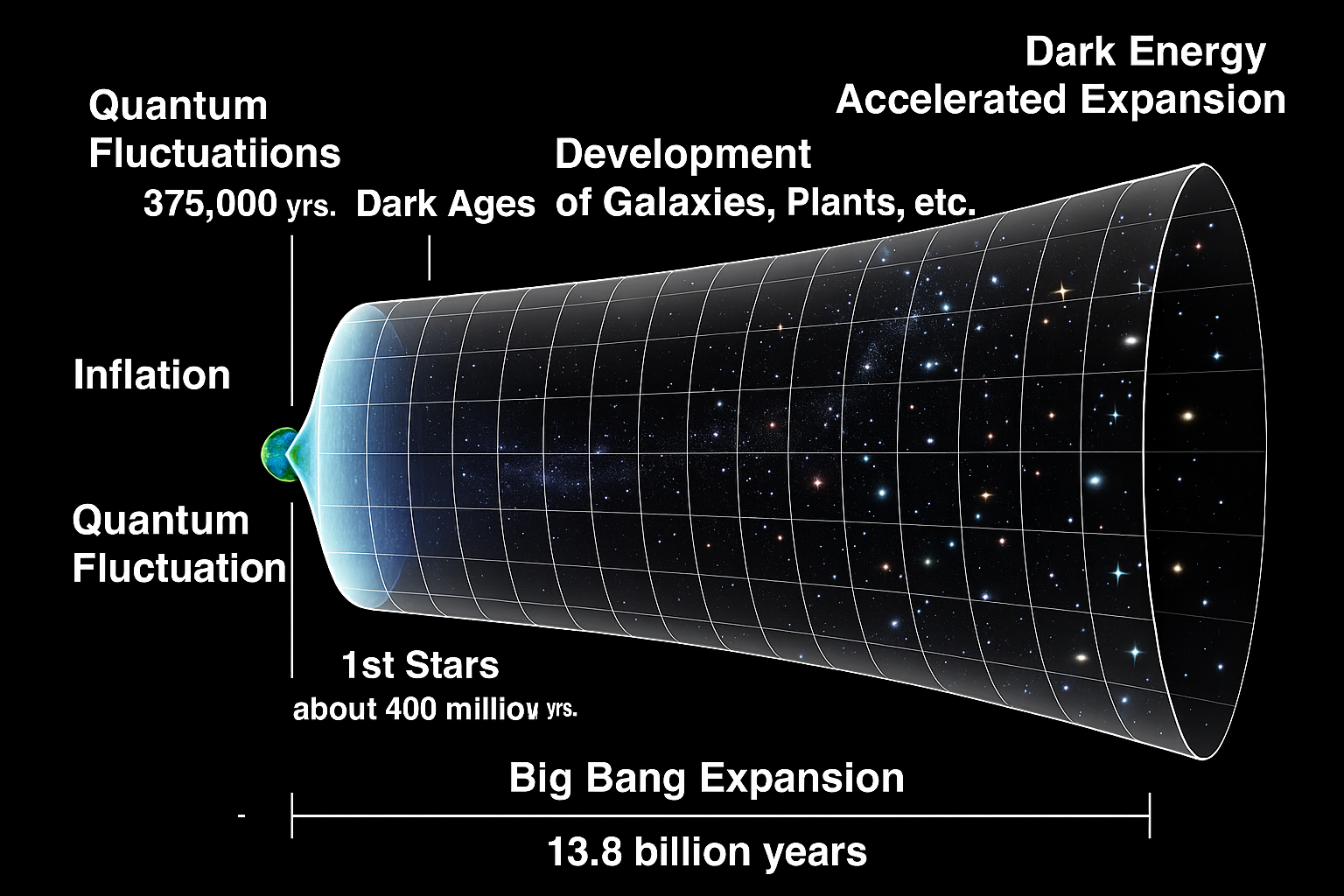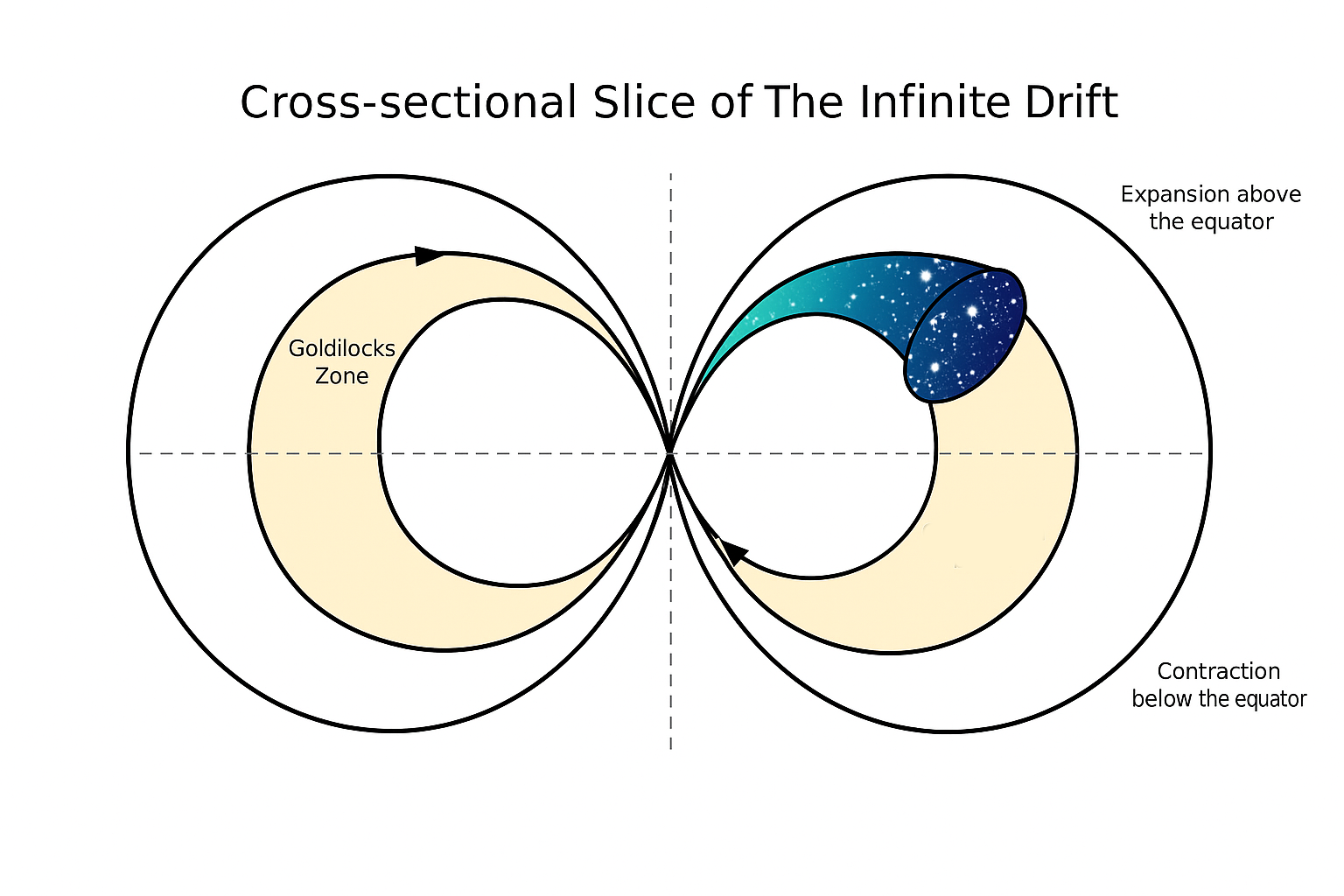Goldilocks Zone

In the context of the Drift Field model, the Goldilocks Zone is more than a habitable orbit — it is the transitional arc within a self-contained universe, where energy, structure, and complexity briefly coexist in balance.
As motion and energy surge upward from the central funnel — what we symbolically associate with the Big Bang, quantum fluctuations, and primordial release — the universe undergoes a phase of pure expansion. This outward drift cools as it climbs, passing through what we refer to as the “dark ages”, where radiation decouples, matter forms, and complexity begins to emerge.
The equator of the Drift Field marks a pivotal moment — the turning point of this vast cycle. It is here, in the upper curve of the toroidal arc, that expansion begins to slow. The field reaches its maximum spatial complexity and minimum thermal chaos — the ideal conditions for galaxies, stars, planets, and possibly life. This is the Goldilocks Zone: not too hot, not too cold, not too dense, not too diffuse.
Beyond the equator, the field begins to curve downward, entering a phase of gradual contraction. Entropy increases. Order declines. Matter is pulled inward toward the opposite funnel — a gravitational return we metaphorically call the black hole, where the field compresses again toward heat and silence. It continues downward, sloping inward, eventually curving around and flowing back again — a continuous rhythm that repeats, not ends.
This is not a story of beginning and end. It is a closed loop of drift — with the Goldilocks Zone as its brief, radiant pause between chaos and collapse.
Standard Cosmological Model

This familiar cone-shaped diagram represents the standard model of cosmic expansion, where the universe begins with a Big Bang, followed by a rapid phase of inflation, cooling through the dark ages, and gradually forming stars, galaxies, and structure.
Time moves left to right, with space expanding outward — culminating in today’s accelerated expansion driven by dark energy. It’s a linear, outward-flowing model that maps cosmic history from a singular event to the ever-widening present.
Superimposing the Standard Model

What if the classic Big Bang timeline — that elegant cone of quantum spark to galactic sprawl —
isn’t an external shape, but a segment of motion within a greater field?
What if that long arc of cosmic expansion we’ve come to accept as the universe is just the
visible path of our drift through something far larger?
In this view, the Standard Model of cosmic expansion fits seamlessly along the expanding arm of the Drift Field’s Goldilocks Zone. The familiar story of quantum fluctuations, inflation, cooling, star birth, and accelerated expansion may all unfold not along a straight vector, but along a curved field path, shaped by thermodynamic equilibrium and gravitational tension. It’s not wrong — it’s just framed differently.
And here’s the key:
This isn't one of many discrete, curving trumpet universes diverging from a central node.
The Drift Field is fluid — one continuous, entangled structure.
Everything flows. All points curve. All directions feed the field.
What we observe — the “visible universe” — is a section of that flow, traced along a path where complexity emerges, where radiation cools, where galaxies become possible. This diagram doesn’t show many timelines — it shows where ours appears, for now, in the larger motion of the Infinite Drift.
